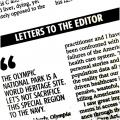
Saturday’s pre-dawn attacks on an oil processing facility at Abqaiq and the nearby Khurais oil field knocked out 50% of Saudi Arabia’s entire oil output - five percent of the global oil supply. “This incident effectively eliminates the world’s spare capacity,” said Sarah Cottle, global head of market insight at S&P Global Platts.
Henry Scott (Climate change protest, Letters, September 13) worries that “climate change is one of the greatest threats to humanity of our era”. We are told that the trace gas that we breathe out, CO2, is so dangerous that fossil fuels, our most successful source of cheap reliable energy, must be eradicated in favour of expensive, unreliable wind and solar. In reality, wind turbines and solar farms are totally dependent on the rolling backup of fossil fuel power-plants and imported nuclear-generated electricity for those times when the wind doesn’t blow and the sun doesn’t shine. The proliferation of unreliables only increases the need for fossil-fuel power stations. Together with other countries that are trying vainly to coordinate two systems that were never designed to work together, the UK has recently experienced power-grid problems and black-outs.
Is CO2 dangerous? Today, CO2 is at a historically low level. Horticulturalists pump CO2 into their greenhouses to boost plant-growth. 440 million years ago, when we were in the depths of the coldest period in the last half billion years, CO2 was at 1100% of today’s level. The last Ice-Age peaked about 18 thousand years ago. The big melt began about 12 thousand years ago and finished about 5 thousand years ago. Are the last 20 or 30 years the warmest since the last Ice Age? No. Peak warming after the last Ice Age was 6000 BC, the Holocene Optimum. Frozen tree stumps have been found under a mile of ice - and at the bottom of the Arctic Ocean is a layer of dead algae. Algae need sun. As late as 1000 AD, there was no summer ice at the North Pole. A thousand years ago, Vikings colonised Greenland, grew barley and brewed their own beer. The Medieval Warm Period followed. From 1300 to 1850, we had the ‘Little Ice Age’. From 1600 to 1800, there were winter ice-fairs and skating on the river Thames.
For 90% of the whole of geologic history, 4.65 billion years, the Earth was warmer than it is now. For only 5 - 10% of geologic time was there any substantial ice on earth. Technically, we are still in an Ice Age. The “greatest threat to humanity of our era” is not the benign trace-gas, CO2, that plants depend on for growth. It is the self-serving marketing organisations, wealth management companies, transnational corporations and environmental activists who erroneously claim that fossil fuels are dangerous. Ignorant politicians have channelled billions of pounds of tax-payers’ money into subsidies for ‘unreliables’ which have increased the overall cost of energy and had no effect whatsoever on the Earth’s climate. But their most culpable error has been to indoctrinate the young via politicised education and a tame-media into fearing human ingenuity and the free-market that enables it. Energy, the petrochemical industry and its products (plastics/polymers) support the entire spectrum of daily life, from clothing, housing, automobiles, agriculture, medical appliances, electronics and electrical goods to food and water security, healthcare, information technology, entertainment, space exploration and high performance-fibres. 3D printing is currently revolutionising surgery and bio-medical technology. Civilisation, as we know it, would be impossible without what have been dubbed “freedom molecules”.
Social-engineers who see themselves at the heart of a one-world-government think they can legislate to control the Earth’s climate when scientists cannot even predict the incidence of hurricanes or whether there will be an El Niño eight weeks before its onset.
Prof. Christine Wheeler McNulty
Oxhey



Comments: Our rules
We want our comments to be a lively and valuable part of our community - a place where readers can debate and engage with the most important local issues. The ability to comment on our stories is a privilege, not a right, however, and that privilege may be withdrawn if it is abused or misused.
Please report any comments that break our rules.
Read the rules hereLast Updated:
Report this comment Cancel